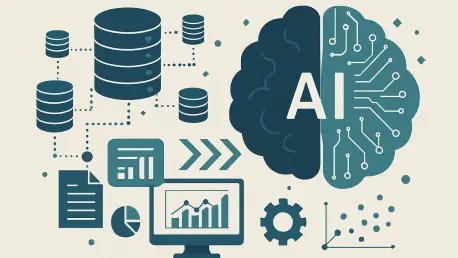The role of translytical databases in AI-driven applications has become increasingly significant as traditional data architectures fail to keep pace with modern business requirements. Businesses are facing the challenge of integrating transactional and analytical processing efficiently to meet the growing demand for real-time data. Translytical databases emerge as a critical solution by seamlessly integrating these workloads into a unified platform. This innovation addresses the limitations of separate platforms that hinder the ability to provide continuous, accurate, and real-time data necessary for AI applications like conversational AI and customer service chatbots. These applications rely heavily on uninterrupted data streams to deliver optimal performance and accuracy. With experts such as Noel Yuhanna shedding light on how these databases are reshaping data processes and methodologies, the transformative impact of translytical databases is poised to redefine efficiency in AI systems. As businesses seek to harness their potential, the drive toward these unified platforms reflects a strategic move toward more agile and responsive data processing models.
Implementation in AI Applications
The integration of translytical databases into AI applications is a game-changer, primarily by facilitating real-time data for contextual accuracy that is vital for large language models (LLMs) and retrieval-augmented generation (RAG) systems. These systems thrive on the currency of data, directly improving the capability of AI applications to produce accurate and reliable responses. In contexts like customer service, AI-driven chatbots require immediate access to real-time account or order data to operate effectively, while financial analysis tools depend on perpetually updated market data to assess customer portfolios. Translytical databases provide a unified platform to seamlessly integrate transactional and analytical data, enabling rapid consolidation of contextual information from numerous sources. This unification enhances the proficiency of AI applications, ensuring precise and timely responses. Additionally, translytical databases often incorporate vector capabilities, significantly boosting the efficiency of data retrieval processes, especially in RAG applications, by efficiently identifying similar datasets. This feature optimizes overall AI performance, showcasing how translytical databases revolutionize standard data handling practices in AI systems.
Beyond core operations, these databases contribute to enhanced data accuracy and content precision required by generative AI models, AI agents, and LLMs. By consolidating vast data sets, these advanced models can generate responses with higher accuracy and relevance, ensuring content aligns more closely with user queries and expectations. This capability is particularly essential when AI applications interact with diverse datasets, necessitating consistent accuracy in response generation. The streamlined access to integrated data platforms allows AI models to function with improved coherence and precision, reflecting the significance of translytical databases in elevating the standard of AI-driven applications. By focusing on the immediacy and integration of data, these platforms transform the operational capacity of AI applications, positioning them to meet the dynamic needs of contemporary businesses effectively.
Data Governance and Security
In an era defined by the paramount importance of data privacy and security, translytical databases stand out with their robust data governance features that significantly enhance the protection of sensitive information. These databases offer centralized control over data access and stringent regulatory compliance measures, effectively safeguarding sensitive data from unauthorized access. By integrating transactional and analytical data within a single platform, organizations can deploy comprehensive security protocols, reinforcing data protection and ensuring user trust. This capability is especially crucial in industries where data integrity and confidentiality are vital elements of operational success. Centralized governance mechanisms not only streamline data management but also enable businesses to swiftly adapt to evolving regulatory landscapes without compromising data security. The promise of enhanced data governance forms a key part of the appeal of translytical databases, underscoring their importance in modern data architectures.
The enhancement of security measures extends beyond regulatory compliance to foster transparent data interactions within AI-driven applications. Ensuring robust access controls and encryption systems, translytical databases allow organizations to maintain comprehensive oversight of data transactions. This functionality addresses the growing concerns over data misuse and ensures AI applications operate within secure environments. By offering granular data access controls, these databases empower businesses to mitigate risks associated with data exposure, strengthening their overall data security posture. The centralized governance model also introduces a layer of accountability, ensuring detailed monitoring and auditing capabilities for all data interactions. This sophisticated approach to security complements the overarching purpose of translytical databases, reinforcing their role as catalysts for secure and efficient data processing in AI applications.
Strategic Adoption and Future Directions
As traditional data architectures struggle to meet the demands of today’s businesses, the significance of translytical databases in AI-driven applications has grown considerably. These databases offer an innovative solution by merging transactional and analytical processing into a seamless, unified platform. This seamless integration is crucial as it eliminates the inefficiencies of using separate platforms, which often hinder the ability to provide the continuous, reliable, real-time data essential for AI technologies like conversational AI and customer service chatbots. These applications rely on uninterrupted data streams to maintain high levels of performance and accuracy. Experts like Noel Yuhanna highlight how translytical databases are transforming data processing methodologies, marking a significant shift toward improving efficiency in AI systems. The adoption of such unified platforms indicates a strategic move by businesses toward more agile and responsive data processing models, underscoring the potential to harness these innovative databases for enhanced operational capabilities.









